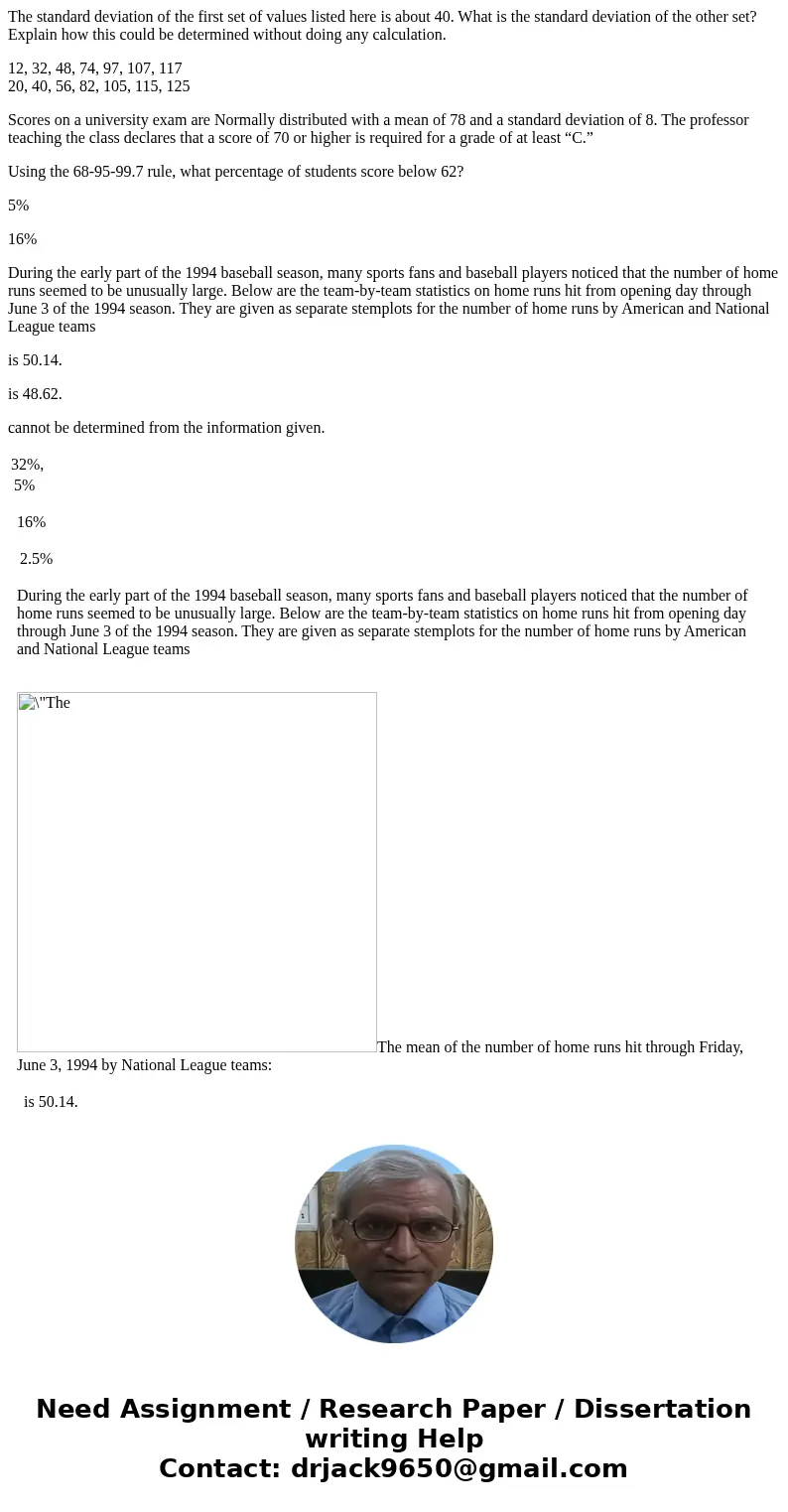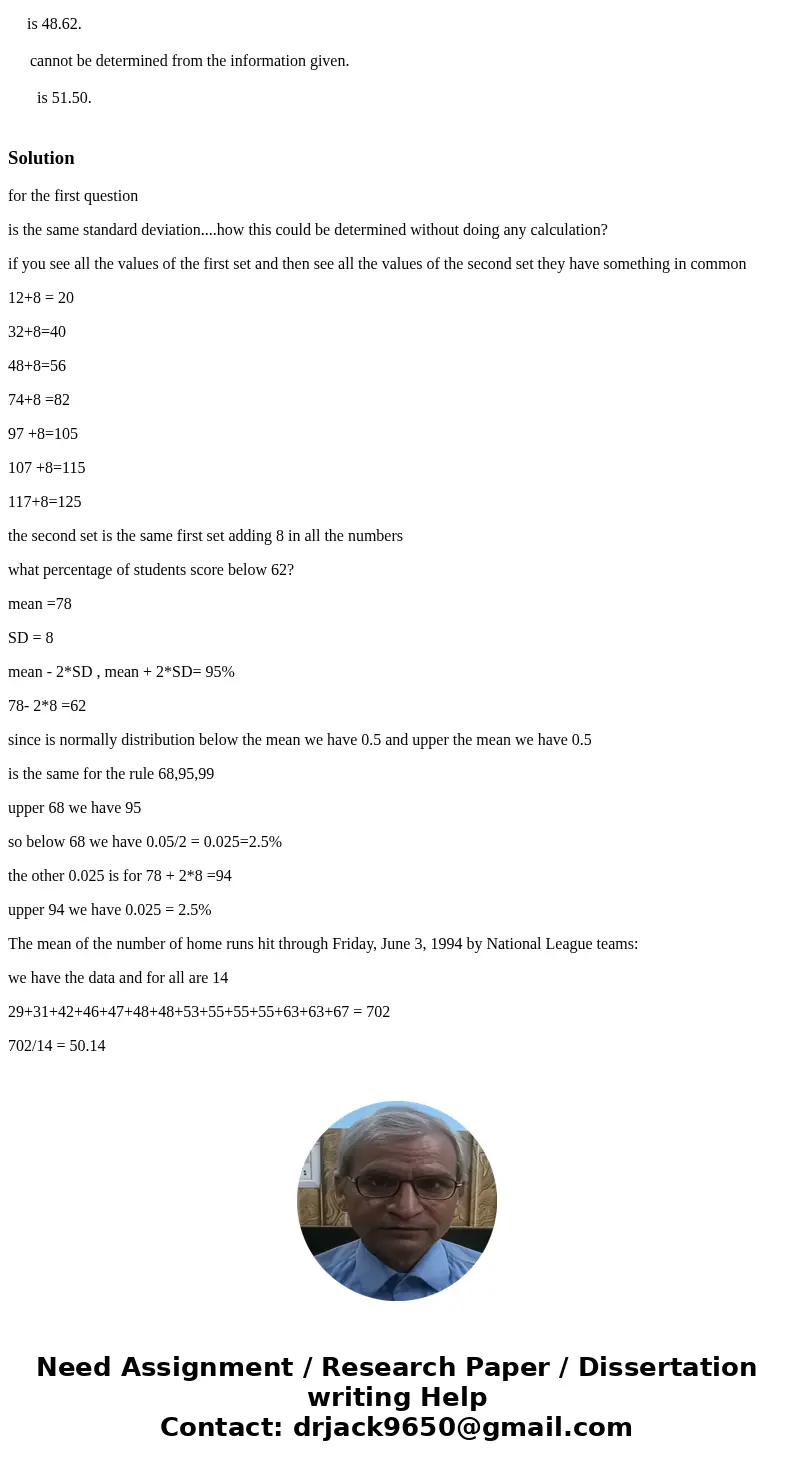The standard deviation of the first set of values listed her
The standard deviation of the first set of values listed here is about 40. What is the standard deviation of the other set? Explain how this could be determined without doing any calculation.
12, 32, 48, 74, 97, 107, 117
20, 40, 56, 82, 105, 115, 125
Scores on a university exam are Normally distributed with a mean of 78 and a standard deviation of 8. The professor teaching the class declares that a score of 70 or higher is required for a grade of at least “C.”
Using the 68-95-99.7 rule, what percentage of students score below 62?
5%
16%
During the early part of the 1994 baseball season, many sports fans and baseball players noticed that the number of home runs seemed to be unusually large. Below are the team-by-team statistics on home runs hit from opening day through June 3 of the 1994 season. They are given as separate stemplots for the number of home runs by American and National League teams
is 50.14.
is 48.62.
cannot be determined from the information given.
32%,
|
Solution
for the first question
is the same standard deviation....how this could be determined without doing any calculation?
if you see all the values of the first set and then see all the values of the second set they have something in common
12+8 = 20
32+8=40
48+8=56
74+8 =82
97 +8=105
107 +8=115
117+8=125
the second set is the same first set adding 8 in all the numbers
what percentage of students score below 62?
mean =78
SD = 8
mean - 2*SD , mean + 2*SD= 95%
78- 2*8 =62
since is normally distribution below the mean we have 0.5 and upper the mean we have 0.5
is the same for the rule 68,95,99
upper 68 we have 95
so below 68 we have 0.05/2 = 0.025=2.5%
the other 0.025 is for 78 + 2*8 =94
upper 94 we have 0.025 = 2.5%
The mean of the number of home runs hit through Friday, June 3, 1994 by National League teams:
we have the data and for all are 14
29+31+42+46+47+48+48+53+55+55+55+63+63+67 = 702
702/14 = 50.14


 Homework Sourse
Homework Sourse